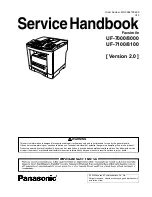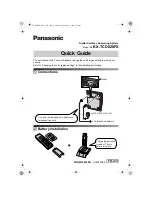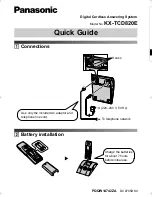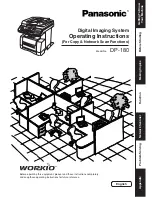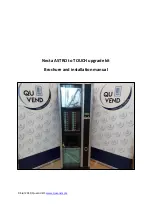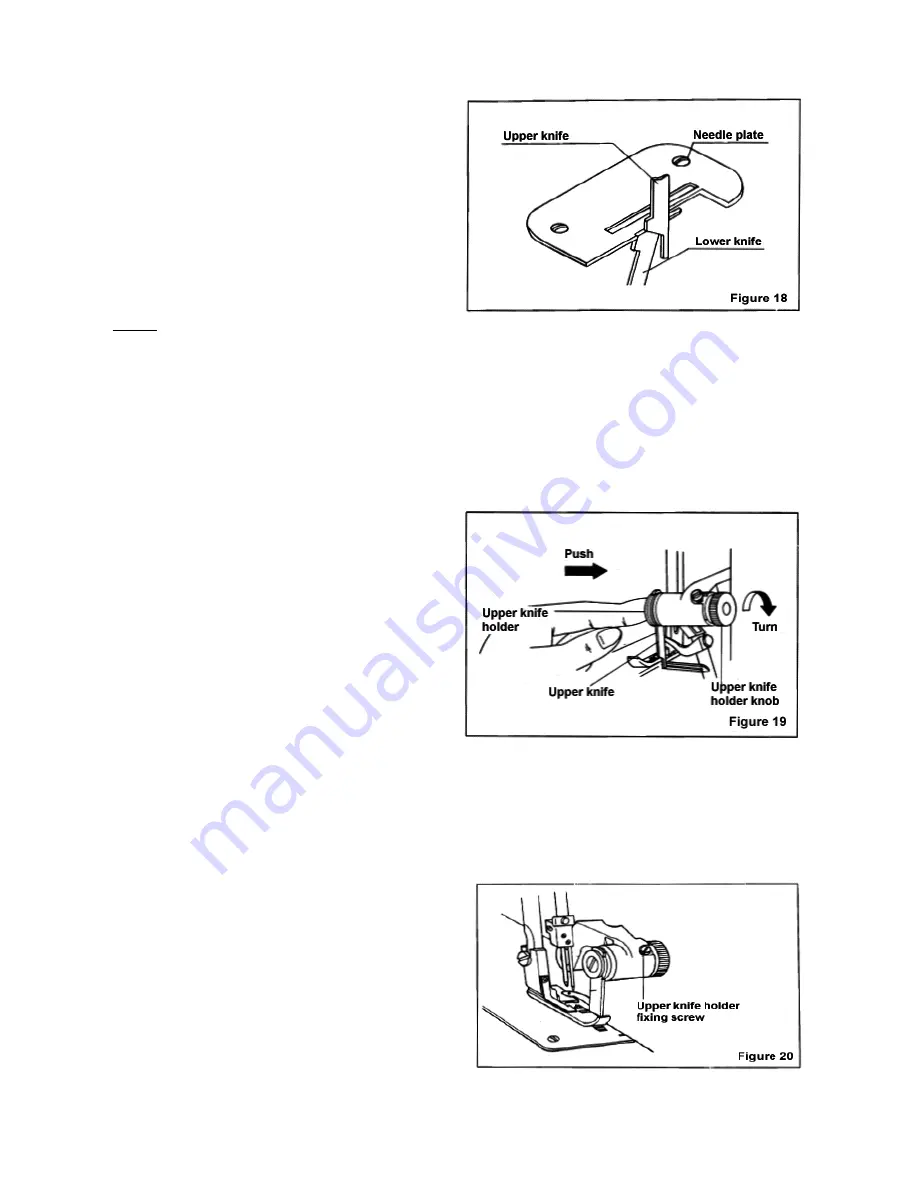
2 – 7 Knives
The two devices used to perform cutting are referred
to as knives – the upper knife and lower knife –
located at the right edge of the needle plate. Unlike
household knives, they are approximately 1/16” thick,
and pose no danger in handling. They cut like
scissors, and their sharpness is derived from the
angle of the precision ground edges.
Never sew over pins with your serger. This will cause damage to both knife blades, making replacement
necessary.
The upper knife is made of an especially hard steel and should remain sharp for a long time, probably many
years. The lower knife is made of a softer steel and will require periodic replacement. The frequency of
replacement is determined by how often you sew, how clean you keep your serger, and the types of fabrics
you sew. Synthetic, metallic, and hard finish fibers cause more wear to the knife blades than do softer, natural
fibers. When you notice the fabric not feeding readily or the edges of the fabric are not cleanly cut, replace the
lower knife. To replace either knife refer to “Care & Maintenance” (Page 31).
The upper knife may be moved out of cutting position when no trimming is desired. The lower knife is in a
fixed position and remains that way, even when cutting is not desired.
•
Disengaging the upper knife
1. Open the front cover.
2. With the left hand, firmly push the upper knife
holder to the right; then rotate the knife holder
knob clockwise with your right hand until the
knife is raised to its highest position. You will
feel it “snap” into a locked position.
3. Close the front cover.
As you sew with the upper knife disengaged, be sure to align fabric with the right edge of the needle plate as
it is fed into the feed dogs. Failure to do so will cause the fabric to catch in the loopers. Should a “fabric jam”
occur, stop sewing immediately. Raise the needle and presser foot, and use the tweezers to free fabric from
loopers. If necessary, remove presser foot for better access.
To return upper knife to cutting position, push upper knife holder to the right, and rotate counter – clockwise
until the knife is completely down and resting firmly against lower blade.
•
Locking the upper knife to sew extra heavy
fabrics
When sewing extra heavy fabrics like denim or
canvas etc., tighten the upper knife holder
fixing screw.
Note: When sewing normal fabrics, loosen the
screw to unlock the upper knife.
11





























